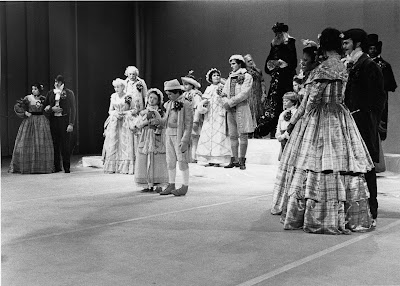The Evolution of a Holiday Classic: A Christmas Carol at A.C.T. Part One
By Michael Paller
*This article originally appeared on Inside A.C.T. in 2016.In the mid-1970s, regional theaters around the country discovered that audiences wanted a Christmas story at Christmastime, and none more so than Dickens’s A Christmas Carol. Adaptations began appearing, starting with the Guthrie (1974) and the Actors Theater of Louisville (1976). Artistic Director Bill Ball asked Company Director Laird Williamson to look at the handful of existing adaptations and choose one to direct. Williamson found them sentimental and clichéd. They were “sugar-coated Dickens,” he said. “Tiny Tim is not the leading character. Scrooge is the real story.”
 |
| The cast of A.C.T.'s 1981 production of A Christmas Carol. |
 |
| Nicholas Perloff-Giles, Andrew Fleischer, Imaide Steverango, and Steven Anthony Jones in A.C.T.'s 2003 production of A Christmas Carol. |
For years, the production provided a vehicle for William Paterson and Sydney Walker, who alternated as Scrooge, with occasional appearances in the role by Ken Ruta and Raye Birk. In 1976, Magnin predicted this play would be “another Nutcracker,” and so it was, returning almost every year until 2005, when a new version continued the tradition.
Carol returns to A.C.T., this time as a radio play! Get your tickets here.

